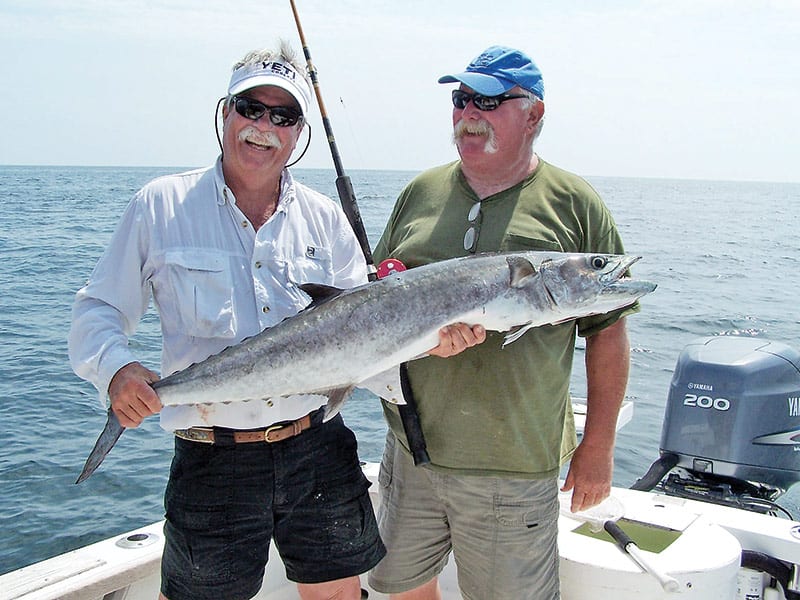
Spring has sprung! The water temperature is rising to that magic number of 70 degrees and that has always been the time to start looking for our migratory fish. Usually, the first to arrive are small Spanish mackerel followed by bigger ones in the 3 to 5 pound class. Spanish can be caught on a variety of lures and baits from shore, boat or pier. Once you hook up on light tackle they can be great fun and fine table fare if you cook them soon after the catch.
Next up are Pompano and there is not a more treasured fish in our waters. They’re also found throughout the area along the beaches and passes. If you can get sand fleas (mole crabs) in the surf, then chances are you’ll be eating Pompano for dinner. However, shrimp or small jigs will do the job when the bite is on. St. George Island is a hot spot for shore anglers and the Gulf side of Dog Island is where boaters can find schools running up and down the beach. Look for fish jumping in the wake of the boat as you move along. For some reason Pompano love to leap in the turbulent water… just having fun, I guess!
April is the month we have been waiting for! Gag grouper season opens in the state waters of Franklin, Wakulla, Taylor and Jefferson counties from 1 April to 30 June, with a take of 2 per angler of fish 24 inches or better. You can troll lures, deep jig, drop live bait or send an alewife (LY) down with a sinker rig. Remember that in Gulf waters you must fish with a true circle hook when using bait. Find natural bottom or try an OAR artificial reef where there are ledges or an irregular bottom configuration.
As the water warms, more species arrive such as king mackerel and cobia. Some early arrivals may show up around the wrecks and channel markers off shore. It’s to your advantage to throw a live bait or jig tipped with bait around these areas and hold on for the big hit. Another good way to fish for these is to use a short trace of wire leader about 6 inches long with a swivel and a treble hook. Put a Spanish sardine on the hook by running one tine of the hook through the bait’s nose and drift it back behind the boat as you fish for gags. The sardine will stay close to the surface in the current and you can get a big hit this way.
Good luck out there and be safe.
CAPT. CHESTER REESE
Natural World Charters
(850) 228-9060
www.naturalworldcharters.com

